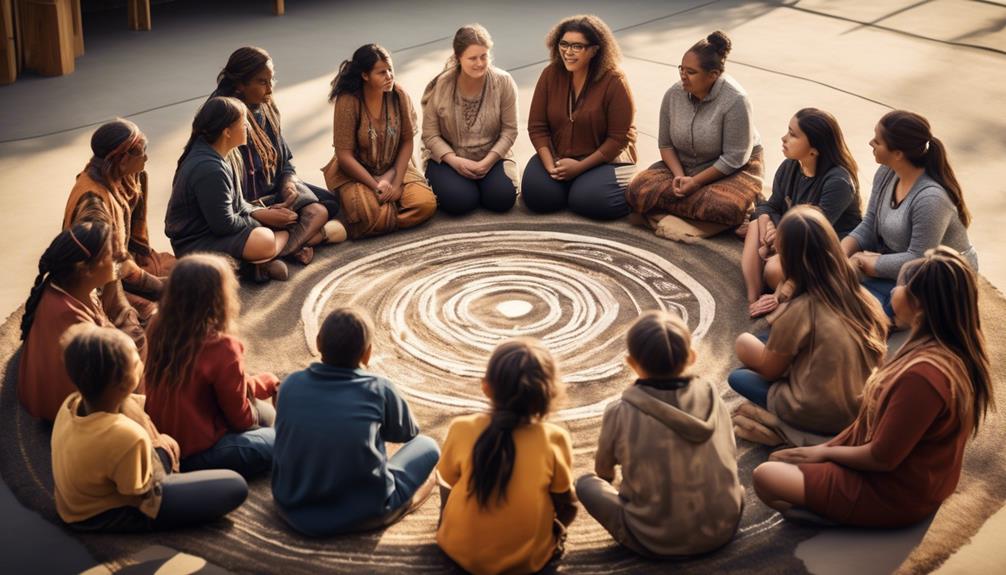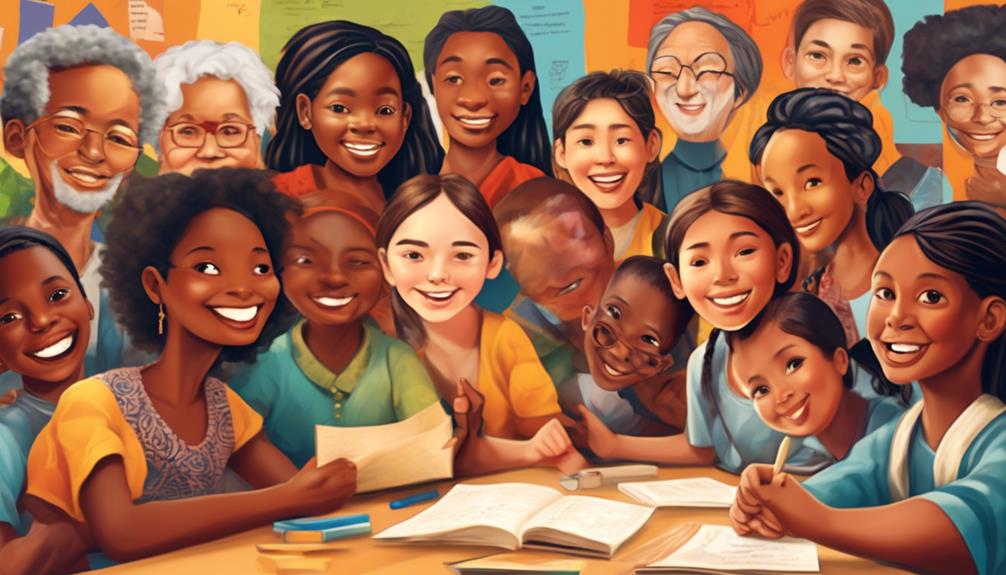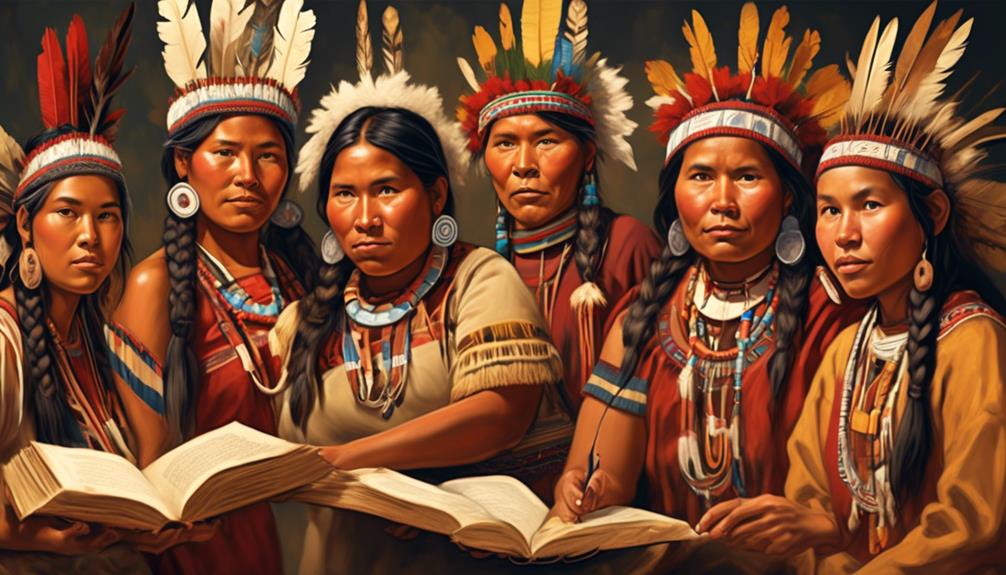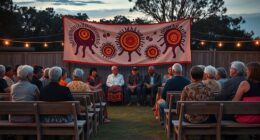We all know the saying, “It takes a village to raise a child,” and this principle is especially important when it comes to developing Aboriginal language programs in schools. The involvement of the community is crucial for the success of these initiatives, ensuring that the languages and customs are accurately and respectfully represented.
But how exactly does community consultation contribute to the development of these programs, and what are the specific benefits of involving community members in this process?
Let's explore the significance of community consultation and its role in creating meaningful and effective Aboriginal language programs in schools.
Key Takeaways
- Cultural understanding and collaboration are crucial for effective development of Aboriginal language programs in schools.
- Local elders and language speakers play a pivotal role in shaping and enriching Aboriginal language programs.
- Collaborative partnerships with the local community ensure the relevance and success of Aboriginal language programs.
- Ensuring cultural respect and sensitivity through community consultation is essential for the development of Aboriginal language programs.
Importance of Cultural Understanding
Understanding the significance of cultural understanding is pivotal for the effective development and implementation of Aboriginal language programs in schools. As we delve into the importance of cultural understanding, we recognize that it goes beyond just language. It encompasses a deep understanding and appreciation of the Aboriginal and Torres Strait Islander people, their traditions, and their cultural identity. By acknowledging and respecting the cultural nuances of the Indigenous community, we create a more inclusive educational environment that promotes diversity and understanding.
In the context of Aboriginal language programs, cultural understanding plays a crucial role in addressing tensions related to identity, power, and resistance. It allows us to incorporate traditional narratives and cultural structures into school practices, fostering greater understanding across cultures. This collaborative effort involving the school district, community, and Aboriginal agencies is essential for the development of effective Aboriginal language programs.
Role of Local Elders and Language Speakers
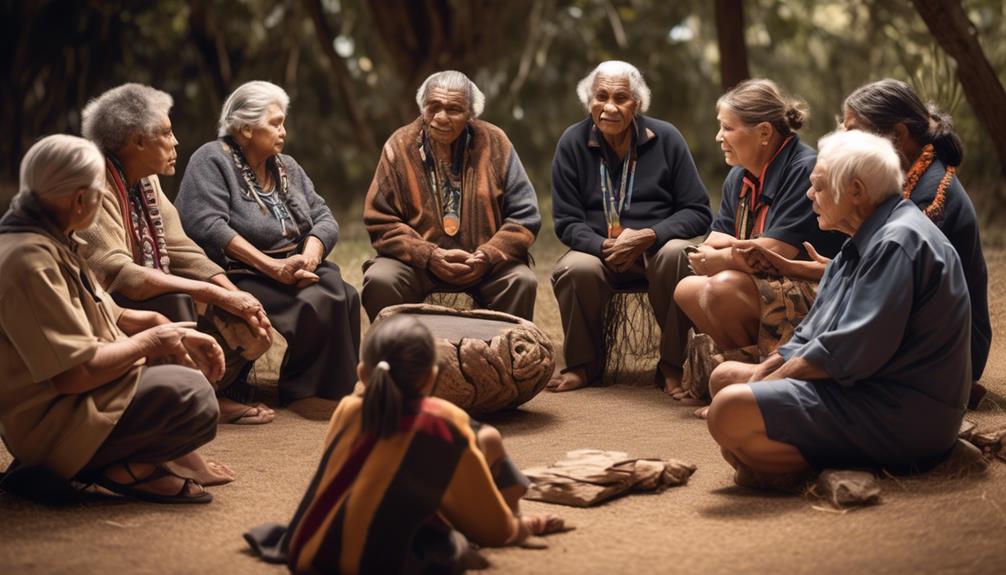
Recognizing the pivotal role of cultural understanding, we now turn our attention to the indispensable contribution of local elders and language speakers in shaping and enriching Aboriginal language programs in schools.
Local elders and language speakers are the cornerstone of preserving and promoting Aboriginal languages. Their traditional knowledge and expertise are crucial in the development of Aboriginal language programs, ensuring that the curriculum is authentic and respectful of the language and culture. Collaboration with local elders and language speakers is vital for incorporating traditional narratives, cultural practices, and oral histories into the language programs, thereby enriching the learning experience for students.
The involvement of local elders and language speakers also fosters a deeper understanding and appreciation of the cultural significance of the language, creating a more inclusive and respectful learning environment. Working closely with the local Aboriginal Education Consultative Group and other community organizations, schools can ensure that the Aboriginal language programs are rooted in the community's heritage and are relevant to the lived experiences of the Indigenous people.
Community Collaboration for Program Relevance
Engaging in collaborative partnerships with the local community is essential for ensuring the relevance and success of Aboriginal language programs in schools. By working closely with local Indigenous community services, such as the NSW Aboriginal Education Consultative, we can ensure that the programs are tailored to acknowledge the traditional language and culture of the community. This collaboration not only fosters a sense of ownership and pride within the community but also helps in uncovering any conflicts or tensions that may exist, providing opportunities for resolution and consensus in the development of the programs.
The involvement of the local community is crucial in transforming the material and discourse conditions through dialogue and norms of reciprocity. This collaborative effort promotes a shared understanding and creates a supportive environment for the development of Aboriginal language programs.
Furthermore, a successful implementation of these programs requires an integrated approach involving the school district, community, and Aboriginal agencies. By working together, we can ensure that the programs aren't only linguistically sound but also culturally relevant, thus contributing to the overall well-being and preservation of Aboriginal language and culture within the community.
Ensuring Cultural Respect and Sensitivity
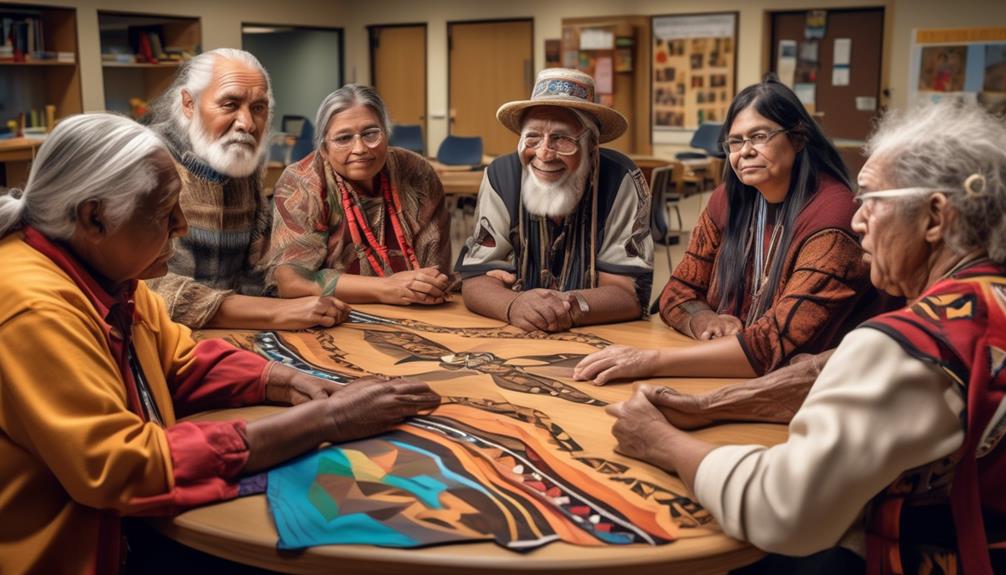
We prioritize cultural respect and sensitivity in developing Aboriginal language programs, recognizing their significance in preserving and honoring traditional narratives and cultural structures.
Engaging in community consultation is fundamental to ensure that the development of Aboriginal language programs aligns with community expectations and respects cultural norms. By actively involving Aboriginal communities, we can gain valuable insights into the nuances of local languages and the cultural context in which they're embedded.
This collaborative approach not only fosters a sense of ownership and pride within the community but also contributes to the positive outcomes of Indigenous students. It's crucial to recognize and incorporate the perspectives of Aboriginal agencies and community members, as they hold invaluable knowledge about the cultural intricacies that should be reflected in the language programs.
Effective Preservation and Promotion of Indigenous Languages
Collaborating with Indigenous communities and educational stakeholders is essential to effectively preserve and promote Indigenous languages in school programs. Learning Aboriginal languages isn't only crucial for the Aboriginal and Torres Strait Islander communities' cultural preservation but also for the broader Australian community's understanding and appreciation.
The Department of Education recognizes that integrating Aboriginal language and culture into teaching and learning practices fosters greater understanding and appreciation among students, leading to improved student outcomes. In the education space, it's imperative to adopt traditional narratives and incorporate cultural structures into school practices to promote a greater understanding across cultures.
To ensure the effective preservation and promotion of Indigenous languages, collaborative efforts involving the school district, community, and Aboriginal agencies are crucial. Overcoming challenges involves transforming material conditions and discourse through dialogue and reciprocity.
Engaging with Indigenous communities and educational stakeholders, particularly in early childhood education, is fundamental for the development of effective Aboriginal language programs. By adopting a collaborative approach and incorporating Indigenous languages into school programs, we can work towards the preservation and promotion of these valuable linguistic and cultural assets.
Frequently Asked Questions
Why Is Language so Important to Aboriginal Culture?
Language is crucial to Aboriginal culture as it preserves our traditions, connects us to our heritage, and empowers our community.
It's the key to understanding our identity and sovereignty. Through language, we communicate our history and values, fostering a deeper cultural revival.
In education, it plays a pivotal role in promoting understanding and respect for our traditions.
Therefore, the preservation of our language is essential for the empowerment and unity of our community.
Who Should Introduce Local Aboriginal Languages Into Your Program?
We believe that introducing local Aboriginal languages into our program should involve collaboration with:
- Local Elders
- School Boards
- Language Experts
- Community Leaders
- Education Department
- Cultural Advisors
- Indigenous Representatives
By engaging these stakeholders, we can ensure a culturally responsive and community-supported approach. Their input and expertise will be invaluable in developing effective and respectful Aboriginal language programs in schools.
This inclusive process will honor traditions, foster understanding, and promote language preservation.
Why Is It Important to Revitalize Indigenous Languages?
Preserving Indigenous languages is crucial for our cultural identity and connection to heritage. Revitalizing these languages empowers our communities, promotes educational equity, and fosters inclusivity. Through language retention, we strengthen intergenerational transmission of knowledge.
Community consultation is essential for the cultural revitalization. It's important to understand the significance of Indigenous languages in preserving linguistic diversity and promoting social equity.
How Can You Use Reflection to Gain Different Perspectives on Aboriginal and or Torres Strait Islander Peoples Cultures?
We use self-reflection to gain diverse perspectives on Aboriginal and Torres Strait Islander cultures. By understanding historical context and engaging in cultural workshops, we enhance cultural understanding.
We seek mentorship from Indigenous elders to deepen our insight. Language preservation is vital, and our educational impact and social responsibility drive us to engage in meaningful conversations with Indigenous community members.
This fosters an inclusive environment and promotes respect for diverse cultures.
Conclusion
In conclusion, the roots of our Aboriginal language programs run deep, like the sturdy branches of a timeless tree.
By engaging in community consultation, we nourish these roots and allow our programs to grow strong and vibrant, like blossoming flowers in the spring.
Let's continue to work together, hand in hand, to ensure the preservation and revitalization of our languages, so that they may continue to flourish and thrive for generations to come.
